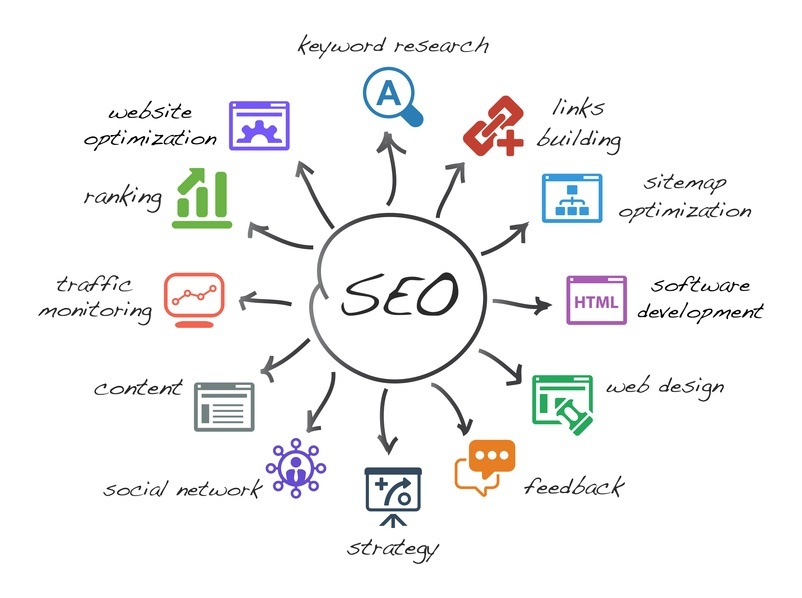Google Posts: Conversion Aspect-- Not Ranking Aspect
The importance of Google My Company
Your Google My Organization listing is your brand-new homepage. If somebody desires your phone number, they do not have to go to your website to get it anymore. Or if they require your address to get directions or if they desire to check out pictures of your company or they want to see hours or reviews, they can do it all right there on the search engine results page.
If you\'re a regional service, one that serves consumers in person at a physical store place or that serves clients at their location, like a plumbing technician or an electrician, then you're qualified to have a Google My Company listing, and that listing is a major element of your regional SEO technique. You need to stand apart from rivals and reveal possible consumers why they ought to check you out. Google Posts are one of the very best ways to do simply that thing.
How to utilize Google Posts effectively
For those of you who do not understand about Google Posts, they were released back in 2016, and they utilized to show up, up at the top of your Google My Company panel, and a lot of organizations went crazy over them. In October of 2018, they moved them down to the very bottom of the GMB panel on desktop and out of the introduction panel on mobile outcomes, and the majority of people kind of lost interest since they believed there would be a huge loss of presence.
But honestly, it doesn't matter. They're still extremely reliable when they're used correctly.
Posts are generally free advertising on Google. They show up in Google search results.
Now people can transform without getting to your site. They appear as a thumbnail, an image with a little bit of text beneath. When the user clicks on the thumbnail, the whole post pops up in a pop-up window that essentially fills the window on either mobile or desktop.
If it takes you 10 minutes to create a post and you do just one a week, that's simply 40 minutes a month. If you get a conversion, isn't it worth doing? If you do them correctly, you can get a lot more than simply one conversion.
In the past, I would have informed you that posts stay live in your profile for 7 days, unless you use among the post design templates that consists of a date variety, in which case they remain live for the entire date variety. It looks like Google has actually changed the way that posts work, and now Google shows your 10 most current posts in a carousel with a little arrow to scroll through. When you get to the end of those 10 posts, it has a link to see all of your older posts.
Now you should not take note of the majority of what you see online about Posts due to the fact that there's a ludicrous quantity of false information or merely obsoleted information out there.
Prevent words on the "no-no" list
Anything with sexual undertone will get your post denied. Or if you're a plumbing technician and you post about "toilet repair work" or "unclogging a toilet", you get rejected for using the word "toilet.".
Be mindful if you have anything that may be on that no-no, naughty list.
Use a luring thumbnail
.
The complete post consists of an image. A complete post has the image and after that text with as much as 1,500 characters, which's all many people focus on. The post thumbnail is the key to success. Nobody is visiting the complete post if the thumbnail isn't attracting enough to click.Think about it like you're producing a paid search campaign. You need truly compelling copy if you want more clicks on your ad or a really awesome image to draw in attention if it's a banner image. The same principle applies to posts.

Make them marketing.
It's also important to be sure that your posts are advertising. People are seeing these posts in the search engine result prior to they go to your site. So in most cases they have no concept who you are yet.
The normal social fluff that you share on other social platforms does not work. Don't share links to blog posts or a simple "Hey, we offer this" message due to the fact that those do not work. Keep in mind, your users are looking around and trying to determine where they wish to purchase, so you want to get their attention with something marketing.

Select the best template.
Most of the things out there will inform you that the post thumbnail screens 100 characters of text or about 16 words gotten into 4 distinct lines. In truth, it's different depending on which post template you use and whether or not you include a call to action link, which then replaces that last line of text.
But, hey, we're all marketers. So why wouldn't we include a CTA link, right?

Both the Occasion and Offer post templates include a title and after that a date range. Some individuals dig the date variety due to the fact that the post stays visible for that whole date range. Now that posts remain live and noticeable forever, there's no advantage there. Both of those post types have that separate title line, then a different date variety line, and then the call to action link is going to be on the 4th line, which leaves you only a single line of text or simply a couple of words to write something engaging.
Sure, the Offer post has a cool little cost emoji there next to the title and some limited voucher performance, but that's not a factor. You should have complete discount coupon functionality on your site. It's better to write something engaging with a "What's New" post template and then have the user click through on the call to action link to get to your site to get more info and convert there.
There's also a brand-new COVID upgrade post type, but you don't wish to use it. It shows up a lot greater on your Google My Service profile, actually just below your top line details, but it's text only. Just text, no image. If you've got an active COVID post, Google conceals all of your other active posts. If you desire to share a COVID information post or updates about COVID, it's much better to use the What's New post design template rather.
Take notice of image cropping.
The image is the discouraging part of things. Cropping is super wonky and actually inconsistent. In reality, you might post the very same image multiple times and it will crop somewhat in a different way each time. The reality that the crop is somewhat greater than vertical center and also a various size between mobile and desktop makes it actually aggravating.
The essential locations of your image can get cropped out, so half of your item ends up being gone, or your text gets cropped out, or things get really tough to read. Now there's a primary cropping tool constructed into the image upload function with posts, but it's not locked to an aspect ratio. Then you're going to end up with black bars either on the top or on the side if you do not crop it to the proper element ratio, which is, by the way, 1200 pixels width by 900 pixels high.
You need to have a manage on what the safe area is within the image. To make things easier, we produced this Google Posts Cropping Guide.
It looks like this. Anything within that white grid is safe which's what's going to show up because post thumbnail. Then when you see the full post, the rest of the image reveals up. You can get truly imaginative and have things like here's the image, but then when it pops up, there's extra text at the bottom.
Consist of UTM tracking.
Now, for the call to action link, you require to be sure that you consist of UTM tracking, since Google Analytics does not always associate that traffic properly, specifically on mobile.
Now if you include UTM tagging, you can make sure that the clicks are attributed to Google natural, and after that you can use the project variable to differentiate between the posts that you published so you'll have the ability to see which post produced more click-throughs or more conversions and then you can adjust your strategy moving on to use the more efficient post types.
For those of you that aren't incredibly familiar with UTM tagging, it's basically adding a question string like this to the end of the URL that you're tagging so it forces Google Analytics to associate the session a specific way that you're defining.
Here's the structure that I recommend using when you do Google posts. It's your domain on the left. Then? UTM_Source gold coast seo services is GMB.Post, so it's separated. UTM_Medium is Organic, and UTM_Campaign is some sort of post identifier. Some people like to utilize Google as the source.
But at a high level, when you look at your source medium report, that traffic all gets lumped together with everything from Google. In some cases it's puzzling for clients who do not actually understand that they can look at secondary dimensions to break apart that traffic. So more notably, it's simpler for you to see your post traffic independently when you take a look at the default source medium report.
You wish to leave natural as your medium so that it's lumped and grouped correctly on the default channel report with all organic traffic. Then you go into some sort of identifier, some sort of text string or date that can let you know which post you're talking about with that project variable. Make sure it's something unique so that you know which post you're talking about, whether it's cars and truck post, oil post, or a date variety or the title of the post so you understand when you're looking in Google Analytics.
It's likewise essential to point out that Google My Service Insights will reveal you the variety of views and clicks, but it's a bit convoluted because several impressions and/or several clicks from the very same users are counted individually. That's why adding the UTM tagging is so crucial for tracking accurately your efficiency.
Upload videos.
Last note, you can also upload videos so a video shows in the thumbnail and in the post.
So when users see that thumbnail that has a little play button on it and they click it, when the post appears, the video will play there. Now the file size limit is 30 seconds or 75 MB, which if you got commercials, that's basically the perfect size. Even though they've been around for a couple of years, most businesses still ignore Posts. Now you understand how to rock Posts so you'll stand apart from competitors and produce more click-throughs.